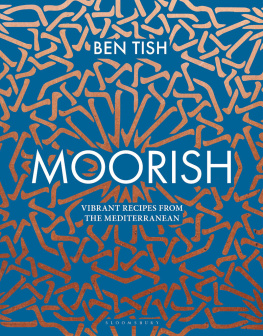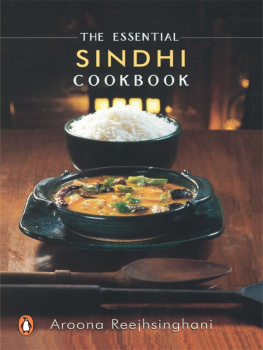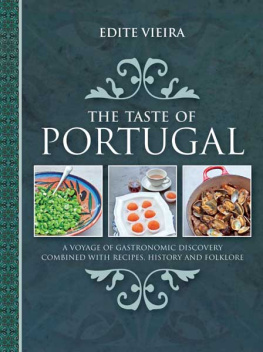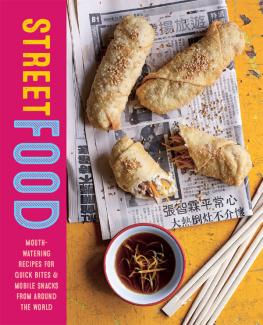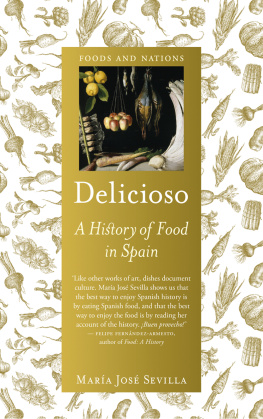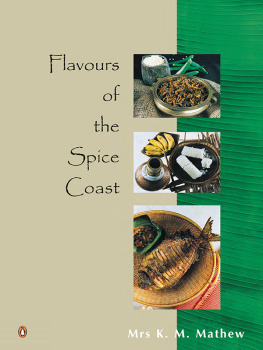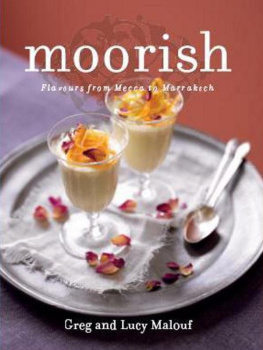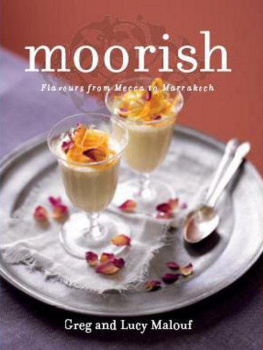
INTRODUCTION

Ive been submerged in the cuisine and food culture of Spain and Italy for well over a decade. In that time Ive explored the many regions of these magnificent countries getting to know their markedly different culinary styles. In particular Ive become more and more intrigued by those regions where the Moors left their influence. Ive learnt how and where they stamped their mark and enjoyed finding out how they managed to combine the indigenous produce and ingredients of the region with their own imported techniques, flavourings, ingredients and spicing to produce the exotic, full-flavoured and vibrant cuisine that we know today. In this book I have set out to explore and celebrate the culinary influence that followed the Muslim conquest of the Iberian peninsula, southern Italy and Sicily.
The invading Berbers of North Africa and later the Arabs from the Middle East were known colloquially as Moors, a catch-all description used to cover the colonial Muslim rulers. The Moors shaped and moulded the infrastructure of the Iberian peninsula, transforming the regions religion, architecture, science, art and food. The legacy of the Moors has lived on long after their expulsion in the late 15th century and can still be seen in the cities, towns and villages to this day. And while many of the physical structures have faded over time, the cuisine is still as bright and as vibrant as ever.
The Moors brought with them exotic spices, fruits, vegetables and nuts. Big, bold-flavoured dishes were created, combining the sun-soaked exotic tastes of North Africa and the Arabic world with the foods and produce of the region. Over time the sacred mixed happily with the profane as dishes built around the forbidden European foods of pork and shellfish were married with the spices and sauces of the Muslim East.
The oppressed Jewish population of Andaluca and southern Spain sided with the Arabs after the invasions in 711. Jews from all over the Mediterranean flocked to Andaluca, attracted by the new, vibrant and exciting era of Spains golden age. Jewish-Moorish cuisine produced wonderful dishes such as partridge cooked and stuffed with coriander, eggs, pine nuts and almonds, and an exotic celebratory dish that was comprised of a complex layering of omelettes, meatballs, mincemeat, aromatic spices and rose water the dish then left to cook overnight on Friday ready for the Saturday sabbath.
These were wonderfully exciting times for this most extraordinary melting pot of cultures and cuisines. A halcyon period for food emerged as Jewish and Spanish dishes took on Moorish influences and were refined and reinterpreted. Simple peasant dishes soon became indulgent Arabic creations.
Ive divided this book into chapters based around the way that I like to cook at home. Super fresh, light refreshingly delicious dishes; slow-cooked dishes that can be left all day to do their thing, filling the house with evocative scents of the East; barbecue and grill dishes that work brilliantly with Moorish inspired spices and flavourings; a sweet and sour chapter celebrating my favourite flavour combination; breakfast and brunch dishes that will make you think again about how you start your day; a short chapter on drinks, long on flavour and deep in alcohol.
First and foremost this is a book for the home cook. The recipes included are in the main simple, though there are a few that will take a little more time than others. And there are also a few recipes that include the occasional ingredient that will need sourcing from specialist food shops or from online stores.
While the recipes included are steeped in authenticity, they more often than not include my own twists and interpretations, influenced by my travels around the region. These are recipes that have been developed and finessed in my kitchen at home, all the while holding firm to the extraordinary influences and techniques of the Moors of the Iberian peninsula.
In short, my book, which is now your book, is all about great, bold, wonderful flavours. The flavours of the Mediterranean and the Moors Moorish.
Ben Tish
London, 2019

The Route of the Moorish Conquest.
Spices
The introduction of spices by the Moors into southern Spain and Italy brought a sparkling culinary enlightenment to the region. A vibrancy of flavours, completely unknown before, soon became an integral part of the make-up of the areas cuisine. As a snapshot of the far-reaching culinary influence of the Moors, Spain now produces 80 per cent of the worlds saffron, while the island of Sicily absorbed cumin and cinnamon into many of its savoury and sweet dishes.
Spices have become a passion of mine over recent years and I love spice-heavy cuisines. My wife is half Indian and Ive spent a lot of time travelling through Assam, taking back influences from the region to try out in my kitchen at home, experimenting with freshly ground dry spice mixes and pastes.
This book showcases all of my favourite spices cumin, cinnamon, cardamom, saffron, fennel seeds and sumac, and throughout I explain how best to use them and with which foods they work best, and how some spices are best added at the beginning of a dish and others right at last minute.
I havent been classically trained in using spices, which is one of the reasons that I find them so magically intriguing. With the potential to be both potent and also subtle, their possibilities in the kitchen are endlessly enticing and challenging. Spices need to be fresh three-year-old jars at the back of the store cupboard wont do so be sure to buy little and often, and grind them as and when needed.

Spices
Smoked Paprika
Paprika or pimentn was originally introduced into Spain not by the Moors but by the Spanish themselves from Mexico in the 16th century. When the ever-hungry Spaniards found themselves with a happy abundance of flavoursome and juicy red pimentn they quickly jumped on the idea of drying them and turning them into their own paprika de pimentn.
The smoked paprika originated in the region of La Vera in south-west Spain where the rainy climate meant it was hard to air dry peppers so a smoky boost of heat was added! And thus, rather more by luck and necessity than design, the smoked pimentn powder was created, emboldened with rich depth, subtle smoky spice and an intriguing ethereal flavour. This exotic spice instantly became absorbed into the regions of Spain and Portugal where Moorish-influenced cuisine was already prevalent. Smoked pimentn became an instant bedfellow with cumin, coriander and saffron.
Smoked pimentn both hot and sweet varieties are used in Spanish chorizo and sobrassada for flavour and colouring as well as in rich stews such as Algerian mutumma and nut-based sauces such as romesco. I love to create dry blackening rubs for meat and fish made with sweet smoked paprika mixed with a little sea salt and honey and some fresh thyme perfect for cooking over coals or wood. I also love to stir a spoon of hot smoked paprika into white beans or lentils just a few minutes before they have finished cooking.

